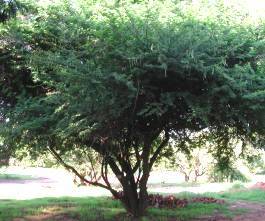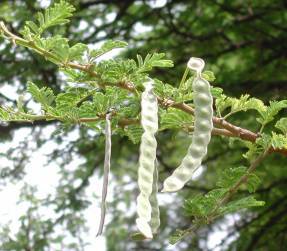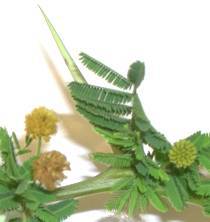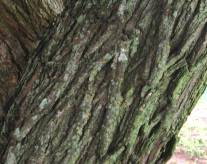
Acacia Nilotica - Scented-pod Acacia / Lekkerruikpeul (50 Seeds)
Check my rate
| Main centres: | 1-3 business days |
| Regional areas: | 3-4 business days |
| Remote areas: | 3-5 business days |

| Main centres: | 1-3 business days |
| Regional areas: | 3-4 business days |
| Remote areas: | 3-5 business days |
LOURENS TRADING CC
ITEM: Acacia Nilotica
COMMON NAME: Scented-pod Acacia / Lekkerruikpeul
FAMILY: Fabaceae
SIZE: Up to 6m

If you were a game or stock farmer with browsers on your property, this lovely Acacia species would
be an asset to you. Please just remember the pods are said to be toxic to goats.
Description
A medium to large tree that can reach a height of 10 m, with an average of 4-7 m in height.
The crown is somewhat flattened or rounded, with a moderate density. The branches have a tendency
to droop downwards if the crown is roundish. The bark is blackish grey or dark brown in mature trees
and deeply grooved, with longitudinal fissures. The young branches are smooth and grey to brown in
colour. The young twigs are covered in short hairs. Paired, slender, straight spines grow from a
single base and sometimes curve backwards, are up to 80 mm long and whitish but often reddish brown
in colour.
The leaves are twice compound, i.e. they consist of 5-11 feather-like pairs of pinnae; each pinna
is further divided into 7-25 pairs of small, elliptic leaflets that can be bottle to bright green
in colour. The leaf stalks are heavy. Very small glands, almost not noticeable with the naked eye,
can be found at the base of most of the upper pinnae pairs.
It bears single to several, bright, golden yellow, globose, scented inflorescences between the
leaves. The flower stalks are hairy. It flowers mainly from September-January, but it depends on
the rainy season. The pods are very characteristic, resembling a beaded necklace. The pods are flat,
straight or slightly curved, and fleshy when young with reddish hairs, becoming dark blackish when
mature, deeply constricted between each seed and they do not split open, but break up transversely
on the ground into single-seeded segments during March to September. The pods are sweetly scented when
crushed and contain a sticky fluid.
Distribution and Habitat
This tree occurs in a variety of woodland types, wooded grassland and scrub escarpment, forests
and low-lying forest, in deep soil and along rivers. It is found in large areas of KwaZulu-Natal,
Swaziland , eastern and northern Mpumalanga , the northern part of Gauteng , throughout Limpopo and
the northeastern part of the North-West. This subspecies occurs south of the Zambezi River.
Derivation of name and historical aspects
Acacia is from the Greek word akis meaning sharp point, nilotica refers to it occurring along the
Nile River , and kraussiana refers to Dr Christian Ferdinand Friedrich von Krauss (1812-1890), a
German biologist and professor at the University of Stuttgart who travelled and collected in South Africa .
Uses and cultural aspects
The wood of this species is hard and reddish in colour and most of the browsers eat the leaves.
It is used as firewood and for fencing posts. The bark exudes an edible gum and is used medicinally
according to Van Wyk et al. (2000). The gum can also be used as glue. The Zulus take a decoction of
the bark as a cough remedy. The Voortrekkers made ink and dyes from the pods (red, black and yellow).
Other parts of the tree were used to treat eye diseases, or as a tranquillizer and even as an
aphrodisiac. A root extract was used in the treatment of tuberculosis, impotence, diarrhoea,
haemorrhages, toothache, dysentery and gonorrhoea. Extracts made from the leaves are used in
the treatment of menstrual problems, eye infections, sores (specifically those caused by leprosy),
ulcers, indigestion and haemorrhage.



